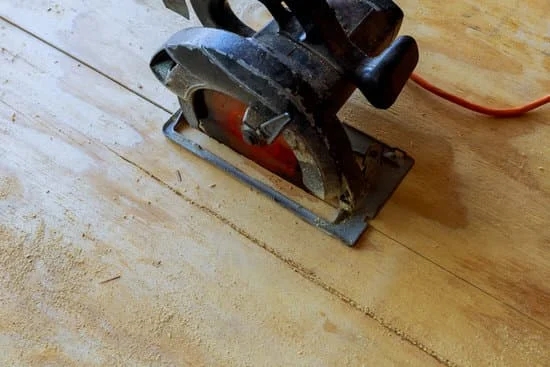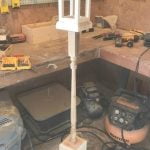For woodworking enthusiasts looking to make the most out of their small shop spaces, understanding the significance of a well-designed small shop layout is crucial. Efficient use of limited space can greatly enhance productivity and creativity in woodworking projects. In this article, we explore the key elements that contribute to creating an optimal small shop layout for woodworking, focusing on organization, workflow optimization, storage solutions, essential tools, safety measures, inspiration, and budget-friendly options.
Setting up a small woodworking shop begins with selecting the right location and arranging tools and equipment in a manner that maximizes functionality. The layout should be carefully planned to ensure easy access to tools and materials while also creating a safe and productive workspace. By implementing smart organizational strategies, woodworkers can create a harmonious balance between work efficiency and creative freedom in their compact environments.
Designing the workflow within a small woodworking shop is another critical aspect that can significantly impact the overall productivity of the space. Optimizing the flow of work by strategically placing workstations, machines, and storage areas can streamline processes and eliminate unnecessary movements. With thoughtful planning and attention to detail, even the smallest of shops can become efficient hubs for woodworking creativity.
Setting Up the Workspace
Setting up a small shop layout for woodworking requires careful consideration of the location and organization of tools and equipment. The first step is to select a suitable location that provides enough space for your woodworking projects while allowing for efficient workflow. Ideally, the workspace should have good lighting, ventilation, and access to power outlets. It’s also important to consider noise levels and dust control measures when choosing a spot for your woodworking shop.
Once you have chosen the location, it’s time to organize your tools and equipment effectively. Start by categorizing your tools based on their function and frequency of use. Keep frequently used tools within easy reach, either on wall-mounted racks or in tool cabinets.
Utilize pegboards, drawer organizers, and shelving units to maximize storage space and keep your workspace clutter-free. Investing in mobile workstations or tool carts can also help optimize your small shop layout by providing flexibility in moving equipment around as needed.
In addition to organizing tools, consider creating designated work zones within your small woodworking shop. Separate areas for cutting, sanding, assembly, and finishing will help streamline your workflow and improve efficiency. Make sure each workstation is equipped with the necessary tools and supplies to avoid unnecessary back-and-forth movement during projects. By setting up your workspace thoughtfully and efficiently, you can create a productive environment that maximizes both space and functionality in your small shop layout for woodworking.
Designing the Workflow
- Create Zones: Divide your workshop into different zones based on the type of tasks that will be done in each area. For example, have a cutting zone where all cutting tools are easily accessible, a assembly zone where finished pieces come together, and a finishing zone for sanding and applying finishes.
- Arrange Tools Strategically: Place your most frequently used tools within arm’s reach of your primary work area to minimize unnecessary movement around the shop. Consider using tool stands or wall-mounted storage solutions to keep everything organized and easily accessible.
- Set Up Efficient Workflows: Plan out the sequence of tasks in your woodworking process to create a logical workflow. Ensure that there is enough space between workstations for movement and that there are clear pathways for getting materials from one station to another.
By carefully designing the workflow in your small woodworking shop, you can streamline your processes and make the most of your limited space without sacrificing functionality or productivity. With smart planning and organization, even the smallest shop layout can be optimized for efficient woodworking projects.
Storage Solutions
Utilize Vertical Space
One of the most efficient ways to maximize storage space in a small woodworking shop is by utilizing vertical space. Install shelves, cabinets, or pegboards on your walls to store tools, materials, and other essentials. Additionally, consider using overhead storage racks or pulley systems to keep items off the floor and out of the way. By taking advantage of your shop’s height, you can free up valuable floor space for working and moving around.
Mobile Storage Options
In a small shop layout for woodworking, flexibility is key. Invest in mobile storage solutions such as rolling tool cabinets, workbenches with built-in storage compartments, or wheeled carts. These movable storage options allow you to easily reconfigure your workspace as needed and keep frequently used tools within reach. You can also use vintage tool chests on wheels for a stylish and practical storage solution that can be easily maneuvered around your shop.
Multi-Functional Workstations
Another creative idea for maximizing storage space in a small woodworking shop is to integrate multi-functional workstations. Consider workbenches with built-in drawers, shelves, or cabinets to combine workspace and storage in one compact unit. Additionally, look for tool stands or tables that offer hidden storage compartments underneath or adjustable shelving above. By incorporating multi-functional furniture pieces into your shop layout, you can efficiently utilize every inch of available space while keeping your tools organized and accessible.
By implementing these creative storage solutions in your small shop layout woodworking, you can optimize organization, efficiency, and workflow in your woodworking shop. These ideas will not only help you make the most of limited space but also enhance the functionality and aesthetics of your workspace. Remember that thoughtful planning and innovative design are essential when it comes to creating an efficient and effective small woodworking shop.
Essential Tools
When setting up a small woodworking shop, having the right tools is essential for efficient and successful projects. Here is a list of must-have tools that every woodworker should have in their small shop:
- Table Saw: A versatile and indispensable tool for ripping, cross-cutting, and shaping wood pieces.
- Random Orbital Sander: Perfect for smoothing out rough surfaces and preparing wood for finishing.
- Compound Miter Saw: Ideal for making precise angle cuts on boards and moldings.
- Router: Useful for cutting intricate designs, creating grooves, and adding decorative edges to wood pieces.
In addition to these power tools, there are also hand tools that are vital for any woodworking shop:
- Chisels: Essential for carving out joints, shaping wood, and fine detailing.
- Clamps: Necessary for securing pieces together during assembly or gluing.
- Tape Measure: A basic but crucial tool for accurate measurements ensuring precision in your projects.
Having these essential tools readily available in your small shop layout woodworking area will not only enhance your efficiency but also expand the range of projects you can tackle.
Remember to invest in quality tools that are durable and well-maintained to ensure safety and precision in your woodworking endeavors. With the right tools at hand, you can maximize the potential of your small woodworking shop and take on various projects confidently.
Safety Measures
Proper Equipment Placement
One crucial aspect of ensuring safety in a small woodworking shop is the thoughtful placement of equipment and tools. When designing the layout of your workspace, consider placing tools in such a way that they are easily accessible but do not pose a hazard.
For example, ensure that saws and other cutting tools are placed on sturdy surfaces at an appropriate height to prevent accidents. Additionally, make sure that equipment with moving parts is positioned away from walkways to avoid potential collisions.
Personal Protective Equipment (PPE)
In a small shop layout for woodworking, it is essential to prioritize the use of personal protective equipment (PPE) to prevent injuries. Make it a rule for yourself and anyone working in the shop to wear safety goggles, ear protection, and dust masks when operating power tools or handling wood materials. Investing in quality PPE is a small price to pay for protecting your eyes, ears, and lungs from potential harm while working on projects in your compact workshop.
Cleanliness and Organization
Maintaining a clean and organized workspace is not only essential for efficiency but also crucial for safety in a small woodworking shop. Cluttered work areas can increase the risk of trips, slips, and falls. Implementing regular cleaning schedules and keeping walkways clear of debris can greatly reduce the likelihood of accidents. Additionally, storing flammable materials properly and having fire extinguishers readily available are important precautions to take to ensure the safety of your small shop layout for woodworking projects.
Inspiration and Ideas
When it comes to setting up a small shop layout for woodworking, finding inspiration from well-designed spaces can be incredibly motivating. By exploring examples of efficiently organized small woodworking shops, you can gather ideas and strategies to apply to your own workspace. Whether it’s clever storage solutions, smart tool organization, or streamlined workflow designs, seeing how others have optimized their small shop layout can spark creativity and help you make the most of your own space.
One key aspect to look for in successful small woodworking shops is how they make use of every available inch. From utilizing vertical wall space for tool storage to incorporating multi-functional workbenches with integrated storage compartments, these examples showcase innovative ways to maximize limited square footage. By seeing how others have creatively utilized space-saving techniques, you can adapt similar strategies to tailor your small shop layout to your specific needs and requirements.
In addition to space optimization, examining well-designed small woodworking shops can also provide insight into workflow efficiency. By observing how tools are arranged for easy access during different stages of a project and how workstations are strategically positioned for smooth transitions between tasks, you can glean valuable ideas on how to streamline your own workflow.
Ultimately, drawing inspiration from these examples can not only enhance the functionality of your small shop layout but also boost productivity and enjoyment in your woodworking endeavors.
Budget-Friendly Options
In conclusion, when it comes to setting up a woodworking shop in a small space, strategic planning and creative thinking are essential. By focusing on the key areas of workspace setup, workflow design, storage solutions, tool selection, safety measures, and inspiration for ideas, woodworkers can make the most out of their limited space.
This article has highlighted the importance of a well-designed small shop layout in woodworking and provided practical tips and recommendations to help enthusiasts maximize their efficiency and productivity.
One crucial aspect to consider in optimizing a small shop layout for woodworking is budget-friendly options. It’s important to be mindful of costs while still prioritizing functionality and organization. From utilizing vertical storage solutions to repurposing old furniture as workbenches, there are various ways to save money without compromising on the quality of your workspace. By getting creative with your resources and exploring DIY alternatives, you can create a well-equipped small woodworking shop without breaking the bank.
Ultimately, the key to success in a small shop layout for woodworking lies in thoughtful planning and continuous optimization. With the right approach, even the most compact spaces can be transformed into efficient and inspiring workshops.
By implementing the tips and recommendations outlined in this article, woodworkers can create a productive environment that not only enhances their craft but also fosters creativity and enjoyment in their woodworking pursuits. Investing time and effort into organizing your small shop layout will undoubtedly pay off in the long run, allowing you to fully utilize your space and tools for years to come.
Frequently Asked Questions
How Small Can a Woodworking Shop Be?
A woodworking shop can be as small as a corner in a garage or basement, depending on the tools and materials needed for the projects. It’s essential to organize the space efficiently to maximize functionality and productivity.
How Do I Create a Workshop Layout?
Creating a workshop layout involves carefully planning the placement of workbenches, tools, storage units, and machinery within the space available. Consider factors such as workflow, safety, accessibility, and ventilation when designing the layout to ensure a conducive working environment.
What Is Woodwork Shop Layout?
Woodwork shop layout refers to the arrangement of workstations, tools, equipment, and storage areas in a woodworking shop. An effective layout maximizes space utilization, efficiency, safety measures, and overall productivity in completing woodworking projects. Planning the layout with careful consideration of these elements can lead to a well-organized and functional workshop.

Hi everyone! I’m a woodworker and blogger, and this is my woodworking blog. In my blog, I share tips and tricks for woodworkers of all skill levels, as well as project ideas that you can try yourself.





